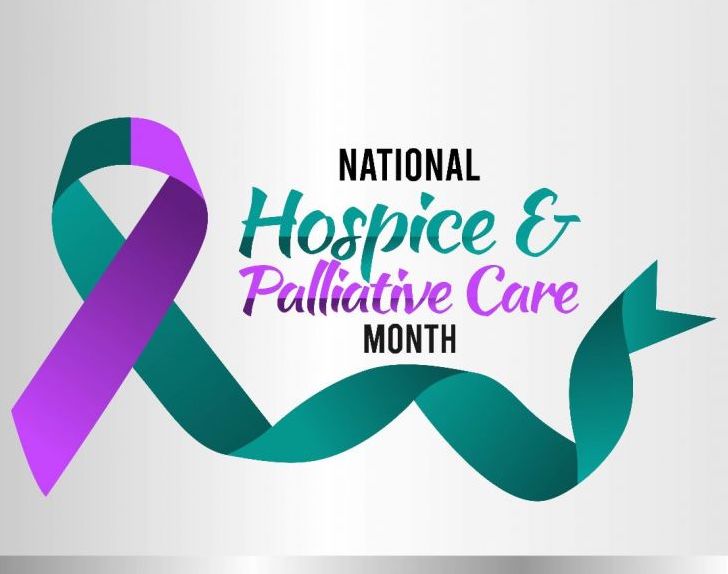National Hospice and Palliative Care Month
National Hospice and Palliative Care Month is an opportunity to raise awareness about hospice and palliative care. Hospice is not a place but high-quality care that enables patients and families to focus on living as fully as possible despite a life-limiting illness. Palliative care brings this holistic model of care to people earlier in the course of a serious illness. This is also an opportunity to acknowledge those dedicated home health, home care, and hospice & palliative care providers that have always been important to vulnerable citizens in our communities, and celebrate recipients of in-home care services that are able to remain in the safety and comfort of their own homes while receiving quality care.
During the month of November, the home care and hospice community honors the millions of nurses, home care aides, therapists, and social workers who make a remarkable difference for the patients and families they serve. “Home care and hospice nurses, therapists, aides, and other providers who choose to use their lives to serve our country’s aged, disabled, and dying. This noble work deserves our recognition and praise and we celebrate November as Home Care & Hospice Month for that very reason.” – NAHC President William A. Dombi https://www.nahc.org/
There are many ways hospice and palliative programs help people. Hospice and palliative care professionals work to remedy symptoms, including pain and shortness of breath, to maintain quality of life. Emotional and spiritual support is also a key component of hospice and palliative care. It gives patients and their loved ones the caring support they need to maintain the parts of their life that are most meaningful to them personally.
“Every year, nearly 1.4 million people living with a life-limiting illness receive care from hospices in this country,” said Edo Banach, president and CEO of the National Hospice and Palliative Care Organization. “These highly trained professionals ensure that patients and families find dignity, respect and love during life’s most difficult journey.” https://www.nhpco.org/
The distinction between palliative care and hospice care can be confusing when deciding the next best course of action when you or a loved one is faced with a serious illness. Although both care plans have similar comprehensive, multidisciplinary team approaches—focusing on holistic care for the entire person—including medical, emotional and spiritual needs, they have key differentiating factors. The main differences include the patient’s prognosis, disease progression and desires for curative treatments.
Hospice care is palliative care, but not all palliative care is hospice care. Palliative care is a type of specialty medicine focusing on pain and symptom management, and hospice care is a subset of that type of care. Think of it in these terms: a dentist is a doctor with an area of expertise—dentistry—but not all doctors are dentists. Dentists simply fit under the umbrella of medicine with particular area of focus.
Palliative Care
Palliative care services are appropriate for any patient, no matter the patient’s diagnosis or disease progression. Individuals with chronic or serious illnesses, those receiving aggressive, curative care and those nearing the end of their lives, are all candidates for palliative medicine. Many times, palliative treatments are used to alleviate side affects of aggressive treatments like those associated with chemotherapy. The patient can work toward curative treatments while receiving palliative treatments and may even one day fully recover from their illness.
Hospice Care
Hospice care, on the other hand, is for those who have a life-limiting illness with a diagnosis of six months or less to live if their illness follows its normal course, according to the patient’s physician and a hospice physician. Although the initial prognosis for a patient must be six months or less to live, it does not mean the patient will be discharged if they live beyond that time frame.
The foundation of hospice care is to provide comfort and symptom management through high-quality care at the end of one’s life. The focus of care shifts from aggressive to comfort care for the patient through the use of medication to keep the patient comfortable when hospice services are started. Where the care takes place is also distinctive to hospice. Services are provided wherever the individual calls home, such as a private residence, nursing home, assisted living facility, veterans’ facility or hospital.
For more information about hospice, palliative care and advance care planning, visit the National Hospice and Palliative Care Organization (link is external)(NHPCO) website.

